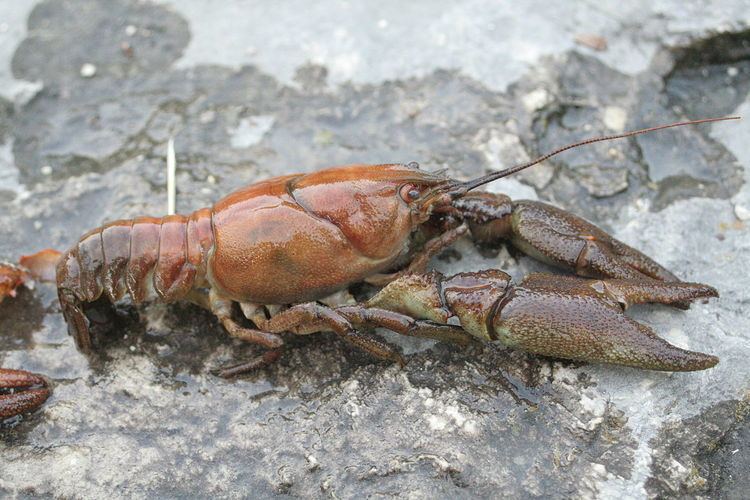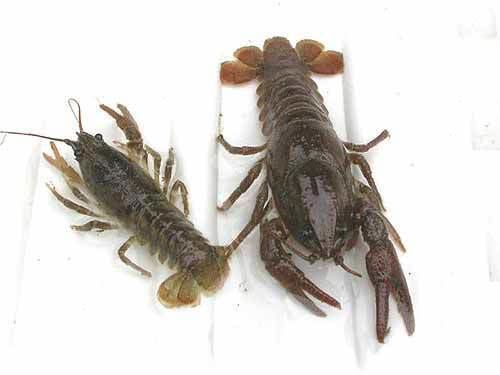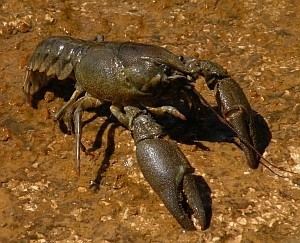Superfamily Astacoidea Rank Species | Scientific name Austropotamobius pallipes Higher classification Austropotamobius | |
 | ||
Similar Austropotamobius, Signal crayfish, Crayfish plague, Pacifastacus, Astacus | ||
Austropotamobius pallipes
Austropotamobius pallipes is an endangered European freshwater crayfish, and the only species of crayfish native to the British Isles. Its common names include white-clawed crayfish and Atlantic stream crayfish.
Contents
- Austropotamobius pallipes
- Cangrejo aut ctono austropotamobius pallipes ismaelnatural
- Distribution and ecology
- Description
- Conservation
- References

Cangrejo aut ctono austropotamobius pallipes ismaelnatural
Distribution and ecology

It is found from the Balkan Peninsula to Spain and reaches its northerly limit in Great Britain and Ireland, where it also has its greatest population density.

Austropotamobius pallipes is the only species of crayfish found in Ireland, occurring over limestone areas inhabiting rivers, streams, canals and lakes. They are absent from the more acidic waters of the west. They occur in streams with a moderate flow alongside other freshwater invertebrates such as caddis fly, mayfly and mollusc species. Trout and three-spined stickleback also occur in the same habitat. Tree roots, rocks in the banks provide shelter. Juveniles shelter in vegetation such as watercress and grass mats growing out of the bank.
Description

A. pallipes is an olive-brown colour, with pale-coloured undersides to the claws (whence the specific epithet pallipes, meaning "pale-footed"). It may grow to 12 cm (5 inches) long, although sizes below 10 cm are more common. It typically lives in rivers and streams about 1 metre deep, where it hides among rocks and submerged logs, emerging to forage for food, and also in lakes.
Conservation

In France A. pallipes is found in streams such as the Mornante and Sellon, two small tributaries of the Dorlay in the Loire department. It is protected as a heritage species. The distribution of A. pallipes is rapidly shrinking and in Great Britain it is now more or less restricted to central and northern England and eastern Wales and a population has been discovered in Essex. There is also a population in Candover Brook, a tributary of the River Itchen in Hampshire. Until recently a population had existed in the River Frome in Bristol/South Gloucestershire, but Avon Wildlife Trust believe this was wiped out during 2007–2008. However, it was once found across most of England and Wales.
One of the major reasons for this decline is the introduction of the invasive North American signal crayfish (Pacifastacus leniusculus) and red swamp crayfish (Procambarus clarkii). The signal crayfish is a carrier of crayfish plague, an infectious disease to which it has resistance while the native crayfish have none. The British species is also sensitive to many kinds of pollution, such as insecticides.
